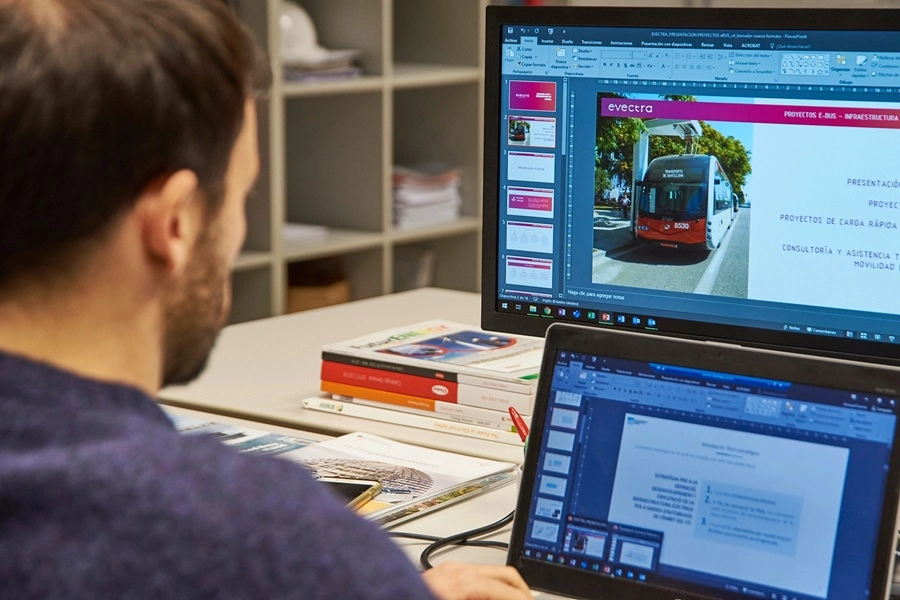The issue with electric scooters is the starting point when talking about safety from the perspective of Francisco Vallecillos, CEO and Founder at Evectra.

Recently, there has been a wave of bans on this type of electrified personal mobility vehicles in various cities, not only in Spain but also in Europe.
Each of the cases exhibits a clear consistency among themselves: the immediate prohibition and the lack of proposals regarding accident prevention.
“Without emphasizing whether the electric scooter in Madrid was altered or not, it should be assumed that the train compartments are not prepared for a fire of this nature,” argues.
The incident in the capital occurred when the battery of an electric scooter inside one of the train compartments exploded during the train stop at La Elipa station.
The result was damage to the floor, the door, and the entire area filled with smoke.
The station had to be evacuated, and firefighters intervened to clean the entire area.
In December 2022, due to a similar case, Catalonia announced the prohibition of bringing electric scooters onto its trains.
Eventually, this measure also extended to the ATM of Lleida, Camp de Tarragona, and Àrea de Girona, expanding the ban to the entire Catalonia region.
In the region, only users of AVE (high-speed train) and taxis were allowed to transport electric scooters in public service.
Vallecillos, drawing from his experience in the design of eMobility projects (where safety takes precedence in all aspects), takes a proactive stance.
“We should consider vehicle certifications, but ideally, we should create conditions so that, in the event of an accident, it can be controlled more easily,” he expresses.
Specific fire protection systems for lithium battery containment focused on controlling the fire, allowing scooters to be transported, could be a useful initial step.
All of this is aimed at avoiding a ban and instead focusing on creating suitable conditions.
“These segments are the most open to manipulation, and this could be avoided by implementing a technical inspection similar to what is done with cars. This way, modifications or deteriorations that lead to accidents like the one in Madrid could be prevented,” he adds in this regard.
Currently, many users make various modifications to their scooters.
Modifications to speed limits and batteries are some of the most common cases, but storage degradation is also frequently observed.
In the face of all these cases that lead to degradation, efforts should be made to implement an inspection that limits the circulation only to units that are in good condition and are safe.
From the perspective of the CEO and Founder of Evectra, this could be done annually, providing an additional layer of security and prevention against potential accidents.
It is crucial to consider these measures as a study conducted by “Brand Tracker,” which analyzes micromobility in more than 500 cities in 33 countries, positions Spain as the first country to use both bicycles and electric scooters daily.
Specifically, 30% of Spaniards already incorporate micromobility vehicles into urban commutes, ahead of 28% of Italians and 25% of the French.
Safety in processes beyond scooters
The call for attention doesn’t stop only at personal mobility vehicles but extends beyond.
The planning processes of eMobility projects, such as the installation of charging points, require ‘significant considerations regarding safety.’
“In the first instance, it is important for people to understand that we are not working on installing a simple plug but maneuvering much more complex components,” points out Francisco Vallecillos in a conversation with Mobility Portal España.
Although certifications for battery packs of cars and heavy vehicles are much more restrictive than those for scooter battery packs, fires also gain relevance here, leading to an analysis of the entire scene in a similar way as before:
“The reality is that all projects can be dangerous; we are working with high voltages, but a guide based on the steps that regulations indicate must be drawn up.”
Standards such as ITC-BT 52, CTE, or RSCIEI propose some basic aspects and should be the basis for advancing these processes.
On the other hand, additional solutions for battery fire containment must also be implemented.
At the same time, the role of engineering becomes vital.
Evectra adds value to its clients through consulting and complex projects that require a high level of technical knowledge and management skills.
From their experience, Evectra focuses on two types of initiatives: complex engineering applied in a single location where perfect adaptation to the specific circumstances of that location is essential, and another where standardization is prioritized because the client requires the same installation in different locations.
This second type of engineering is usually simpler due to the number of repetitions but requires significant management work as there are often a large number of projects in different locations in a very short period.
But both cases are Ad hoc projects where different specialties are intertwined to meet the needs and circumstances of each client.






